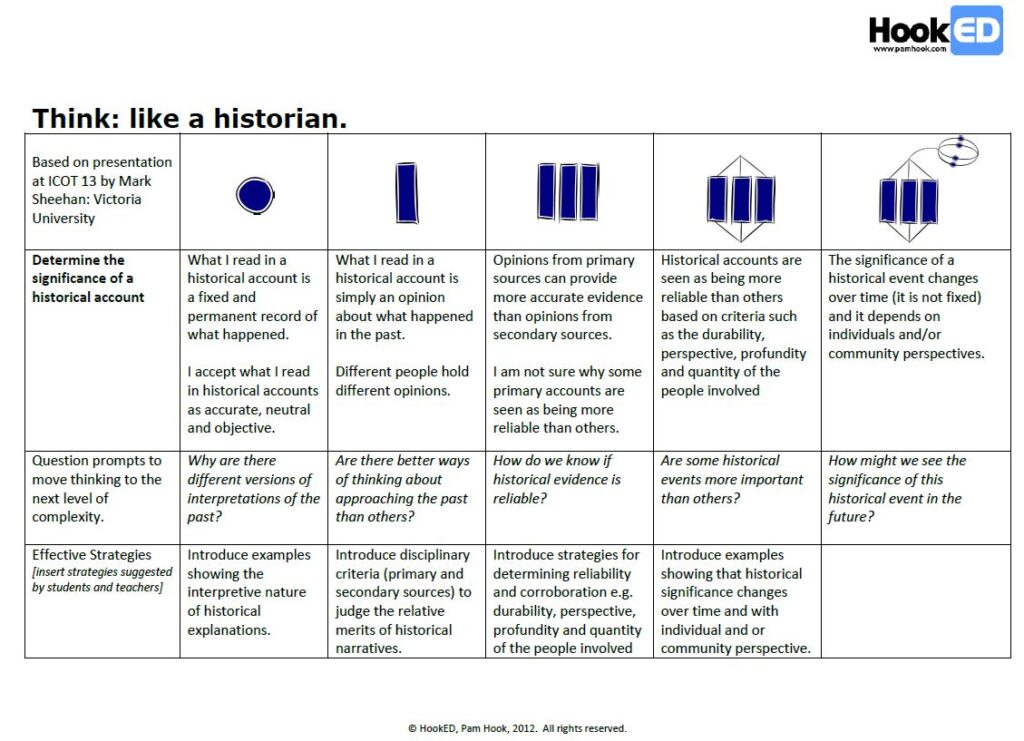It is hard to understand what is going on in the world when everyone is shouting and no one seems to care about the conch shell.
There is increasing cognitive load involved when we help students think like a historian. If we accept that determining the significance of a historical account is nuanced work, then our task is to clarify the criteria for nuance.
SOLO Taxonomy is a model of increasing cognitive complexity. Using it helps to differentiate the criteria for progress when thinking like a historian.
Making the success criteria visible to students matters. As does providing learning strategies prompts, questions and visual mapping strategies to make the differentiated learning goals accessible.
Some examples of SOLO levels and progress maps used by client schools to help students thinking about historical accounts are shared below.





For additional examples refer to
Danish educator Jes Christensens work here
Australian educator Alexandra Pierces work Brunswick Secondary School Melbourne.





{ 2 comments… read them below or add one }
Such useful HookED SOLO maps thank you, Pam. They support surface to conceptual levels of understanding to help students develop critical thinking and inquiry skills to think critically about the past and interpret the stories associated with it.
In knowing and understanding about our past to make sense of the present for shaping a better future, the new Aotearoa New Zealand’s histories curriculum requires students to be critical citizens to view historical events from multiple perspectives, and consider what might have influenced people or groups of people to act in the way they did and the impact of their decisions.
Thanks Joy I do hope the various iterations will be useful when NZ History becomes part of the core curriculum for primary and secondary schools next year.